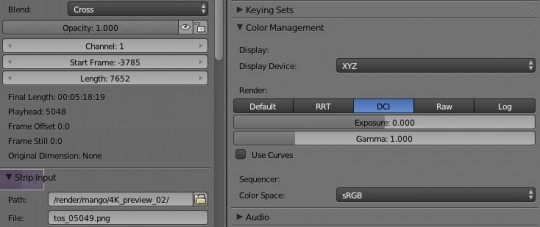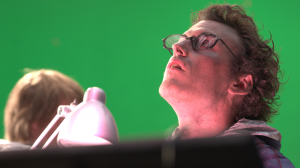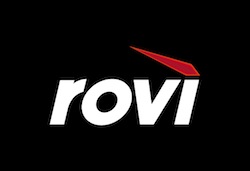You can now watch the film in 4k in Youtube.
Or download a .mov encoded version (6.3 GB, h264 encode, 3840 pixels wide cropped):
Or download the 4k DCP package (14 GB, 4096 pixels wide original)
-Ton-

You can now watch the film in 4k in Youtube.
Or download a .mov encoded version (6.3 GB, h264 encode, 3840 pixels wide cropped):
Or download the 4k DCP package (14 GB, 4096 pixels wide original)
-Ton-
All of the rendered frames in 4k, as 16 bits TIFF files, are now available here:
https://media.xiph.org/tearsofsteel/
You can also find the HD scaled down png files there for encoding fun!
We’ve uploaded the HD scaled down version to youtube now! All the frames (4k 16 bits tiff, HD png) are being uploaded now, will arrive in a couple of days. Enjoy this super crisp new version in Youtube or download a .mov from the NLUUG mirror!
This is a report on how we realized the 4K DCP of Tears of Steel for theater distribution. Our tools of choice where:
In this simplified process of DCP mastering we will go through few linear steps, such as:
First off we need to generate an image sequence of the whole short film, using an appropriate image format, such as TIFF 16bit sRGB. In our case we are talking about 17616 frames, taking 850GB of space. The 4K DCI compliant resolution for our aspect ratio is 4096x1716px.
Once the export has succeeded, we can convert that image sequence into a JPEG2000 12bit XYZ sequence (with a .j2c extension). In order to do this operation we use OpenDCP, a great Free tool that offers both a GUI and a CLI. Once converted, the image sequence for the short film will become around 12GB.
In order to speed up the process and skip the 16bit TIFF generation, we tried to export the edit in JPEG2000 XYZ directly from Blender (with the benefit of using a render farm) but the image format was not accepted by OpenDCP for the mxf wrapping. Hopefully this will be fixed in the future as it saves quite some time and storage space. Continue
We’re almost done! Below are samples from the 4k renders, regraded and sized down to HD. Original 4k png files are here.
BTW: we will have a test screening in Amsterdam, Eye Film Institute, May 8, 10 AM. If you’re in the neighborhood, you’re welcome!
Hello everyone! We are approaching the end of the Tears of Steel 4K project. It has been very exciting and some aspects of the movie have been visually improved, along with some great features added in Blender to enhance the 4K compositing experience. A specific post about this topics is on the way!

Right now we would like to ask for support in the testing of our DCP pipeline output. Here is a test 4K DCP 4K DCP 4K DCP that any owner of a Digital Cinema media server can download and check out. Feedback on the quality and on any issues encountered would be much appreciated.
 Thanks to our friends at Xiph.org we now can offer everyone access to the original source footage of Tears of Steel.
Thanks to our friends at Xiph.org we now can offer everyone access to the original source footage of Tears of Steel.
You’ll find something like 80,000 frames, each in OpenEXR half float files, in 4096 x 2160 pixels. This is 5 times more footage than used in the film, including unused shots, but mainly it’s because of long lead-in and lead-outs, and of course we’ve been cutting shots sharp.
Pictures have been shot using the (4k native sensor) fantastic Sony F65 camera. The raw files were converted with Sony software to OpenEXR, using ACES color. We then converted these with OpenColorIO to Rec709 “scene linear” which we further used for the movie pipeline.
Before we started with this VFX project we already noted a huge lack in available free high quality footage for motion tracking, keying and cleaning testing. With this huge data set this problem now belongs to the past forever!
Note about Creative Commons Attribution: apart from the obvious crediting, you have to be aware that the actors keep their Personal Image (Portrait) and Privacy Rights. That means the footage is OK to use for technical demos, showcases, tutorials etc. But not to use the actor for making a commercial. Read more here.
Have fun!
-Ton-
(BTW: xiph.org is currently syncing files from another server, arrival of all footage finishes in a few days).
 Our open film projects and the 4k re-rendering of Tears of Steel don’t go unnoticed by the industry. We’re very happy to confirm today that Rovi Corporation has offered to become Premium Sponsor for our project, to fund the work we’re doing here to get an amazing 4k (Ultra HD called now) version of Tears of Steel.
Our open film projects and the 4k re-rendering of Tears of Steel don’t go unnoticed by the industry. We’re very happy to confirm today that Rovi Corporation has offered to become Premium Sponsor for our project, to fund the work we’re doing here to get an amazing 4k (Ultra HD called now) version of Tears of Steel.
Rovi Corporation will premiere the first screening of several minutes of 4k ToS in April at the famous NAB show in Las Vegas.
Rovi Corporation press release
We expect to release the new version (downsized to HD, and a 2k DCP) shortly after. The 16 bits lossless frames (and OpenEXR originals) will be available some weeks after – it takes a while to upload another TeraByte of data.
Thanks Rovi!
-Ton-
So then we want to view 4k as well! Here’s a quick making-of.
That was the easy part! Now get X11 to show a full desktop with 2 graphics cards and 4 monitors… how we got it to work:
And voila, we even had Blender running! And more awesome, in the fresh 2.66 release the Blender “DPI” option (user prefs) scales a UI smoothly and crisp to double size as well. Works totally amazing :)
This is very promising for the future 4k computer monitors that soon will be available for more reasonable prices!